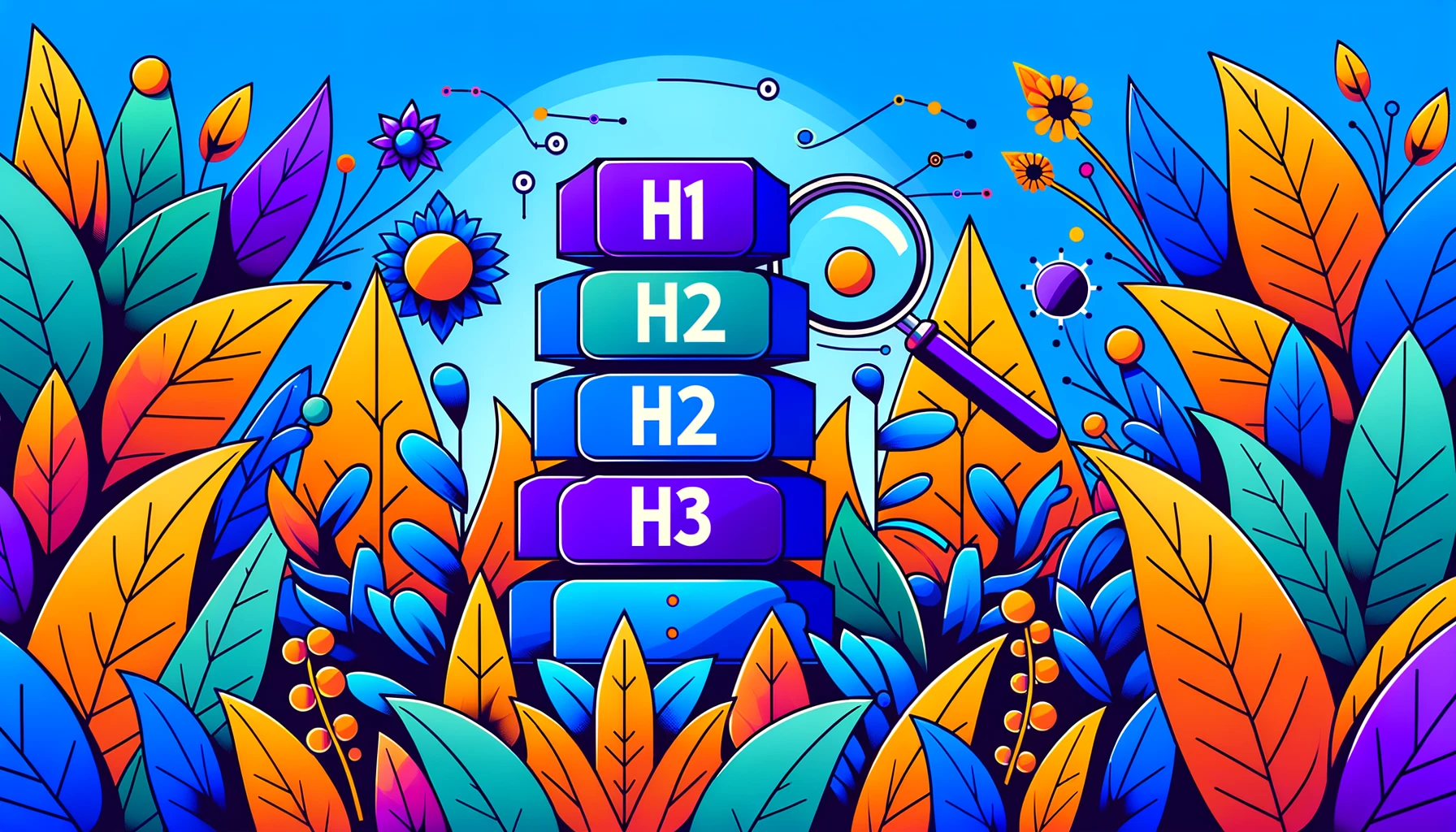Your cart is currently empty!
Header tags are a foundational building block of HTML and the web. Using them correctly helps humans and computers better understand and organize content. This quick guide covers the basics and how to use them effectively for on-page SEO.
What are Header Tags?
Header tags, or heading tags, are HTML elements used to designate headings and subheadings within your content, ranging from H1 to H6.
H1 is the highest level, usually reserved for the page’s main title, while H2 to H6 tags are used for subheadings, with each number indicating the level of subordination.
Why are Header Tags Important?
Proper use provides several key benefits:
- Improved SEO: Search engines use header tags to understand the structure and content of your web page, which can influence your search engine rankings.
- Better Readability: By breaking your content into sections with descriptive headings, you improve readability, making it easier for users to scan and understand your content.
- Increased Accessibility: Header tags provide the structure that helps assistive technologies, like screen readers, understand and navigate your content.
Header Tags in HTML
These tags define the structure of your content, signaling to both the user and the search engine what the content is about.
HTML Example
HTML header tags range from <h1> to <h6>. Here’s how they might look in code:
<h1>Main Title of the Page</h1>
<h2>Major Section Heading</h2>
<p>Some text for this section. This is where your content goes.</p>
<h3>Sub-section Heading</h3>
<p>Text for the sub-section. More content here.</p>
<h2>Another Major Section Heading</h2>
<p>And so on...</p>In this example, the <h1> tag is used for the page’s title. The <h2> tags denote major sections, while the <h3> tag indicates a subsection within the major section.
The <p> tags are used for paragraphs of text within those sections.
Proper Header Tag Usage in HTML
It’s important to note that these tags must be properly opened and closed in HTML. That is, each <h1>, <h2>, <h3>, etc., must be paired with a corresponding </h1>, </h2>, </h3>, and so on. The text between the opening and closing tags gets designated as the heading.
Another key point is the hierarchy of the tags. Typically, there should be a logical order to use header tags, with <h1> as the main title, <h2> major headings, subheadings, and so on. Jumping from <h1> to <h3>, for instance, can confuse search engine crawlers and hinder your SEO efforts.
Using Headers Effectively
To reap the full benefits of proper tags, consider these best practices:
- Use H1 Tags Sparingly: Your H1 tag should be reserved for your page’s title and used only once per page. It should be relevant and accurately reflect the content of the page.
- Use H2 to H6 Tags for Subheadings: These tags should be used to structure your content logically, similar to how you would structure an outline. They provide hierarchy and order to your content.
- Incorporate Keywords: Include primary and secondary keywords in your headers, especially H1 and H2. This can positively impact your SEO. But remember to use them naturally and avoid keyword stuffing.
- Keep Headings Concise and Descriptive: Your headings should be succinct, yet descriptive. They should give the reader a clear idea of what the following section will be about.
Common Mistakes to Avoid
While using header tags, avoid the following common mistakes:
- Skipping Levels: Don’t jump from an H2 to an H4 tag, for instance. This disrupts the hierarchical structure of your content.
- Overuse: While there’s no hard and fast rule on how many header tags to use, avoid using them excessively, as it can make your content seem cluttered and difficult to follow.
- Using for Styling: The primary purpose of header tags is to provide structure and meaning to your content, not for styling or making text look a certain way. Use CSS for styling instead.
Bottom Line
By mastering header tags, you can improve your SEO, readability, and accessibility, providing a better experience for search engines and users. It’s an integral part of creating high-quality, SEO-friendly web content. ?






